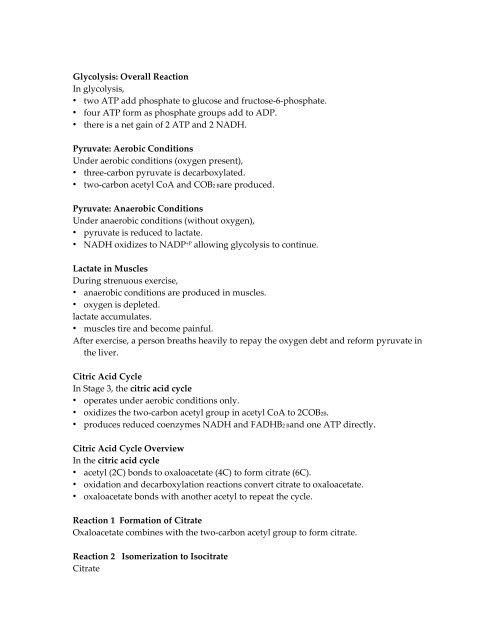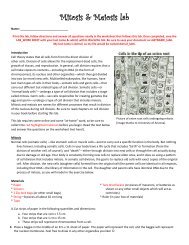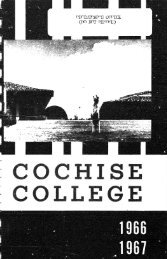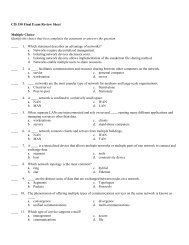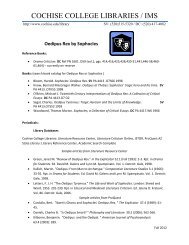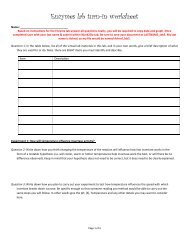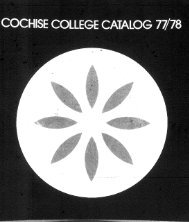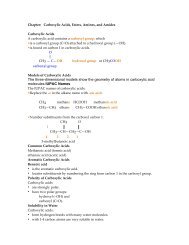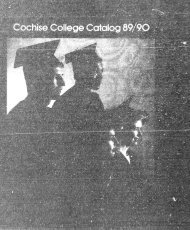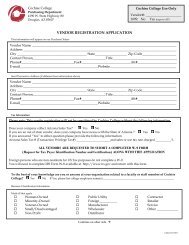You also want an ePaper? Increase the reach of your titles
YUMPU automatically turns print PDFs into web optimized ePapers that Google loves.
Glycolysis: Overall ReactionIn glycolysis,• two ATP add phosphate to glucose and fructose‐6‐phosphate.• four ATP form as phosphate groups add to ADP.• there is a net gain of 2 ATP and 2 NADH.Pyruvate: Aerobic ConditionsUnder aerobic conditions (oxygen present),• three‐carbon pyruvate is decarboxylated.• two‐carbon acetyl CoA and COB2 Bare produced.Pyruvate: Anaerobic ConditionsUnder anaerobic conditions (without oxygen),• pyruvate is reduced to lactate.• NADH oxidizes to NADP +P allowing glycolysis to continue.Lactate in MusclesDuring strenuous exercise,• anaerobic conditions are produced in muscles.• oxygen is depleted.lactate accumulates.• muscles tire and become painful.After exercise, a person breaths heavily to repay the oxygen debt and reform pyruvate inthe liver.Citric Acid CycleIn Stage 3, the citric acid cycle• operates under aerobic conditions only.• oxidizes the two‐carbon acetyl group in acetyl CoA to 2COB2B.• produces reduced coenzymes NADH and FADHB2 Band one ATP directly.Citric Acid Cycle OverviewIn the citric acid cycle• acetyl (2C) bonds to oxaloacetate (4C) to form citrate (6C).• oxidation and decarboxylation reactions convert citrate to oxaloacetate.• oxaloacetate bonds with another acetyl to repeat the cycle.Reaction 1 Formation of CitrateOxaloacetate combines with the two‐carbon acetyl group to form citrate.Reaction 2 Isomerization to IsocitrateCitrate


